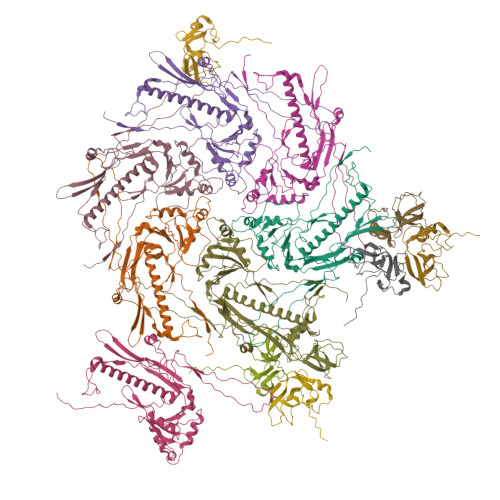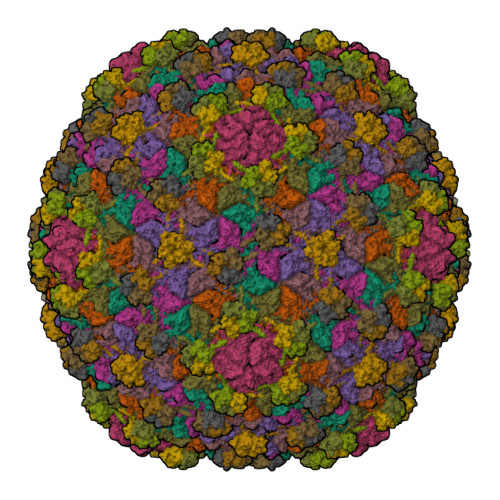Structural basis of bacteriophage lambda capsid maturation.
Wang, C., Zeng, J., Wang, J.(2022) Structure 30: 637
- PubMed: 35026161
- DOI: https://doi.org/10.1016/j.str.2021.12.009
- Primary Citation of Related Structures:
7VI9, 7VIA, 7VII, 7VIK - PubMed Abstract:
Bacteriophage lambda is an excellent model system for studying capsid assembly of double-stranded DNA (dsDNA) bacteriophages, some dsDNA archaeal viruses, and herpesviruses. HK97 fold coat proteins initially assemble into a precursor capsid (procapsid) and subsequent genome packaging triggers morphological expansion of the shell. An auxiliary protein is required to stabilize the expanded capsid structure. To investigate the capsid maturation mechanism, we determined the cryo-electron microscopy structures of the bacteriophage lambda procapsid and mature capsid at 3.88 Å and 3.76 Å resolution, respectively. Besides primarily rigid body movements of common features of the major capsid protein gpE, large-scale structural rearrangements of other domains occur simultaneously. Assembly of intercapsomers within the procapsid is facilitated by layer-stacking effects at 3-fold vertices. Upon conformational expansion of the capsid shell, the missing top layer is fulfilled by cementing the gpD protein against the internal pressure of DNA packaging. Our structures illuminate the assembly mechanisms of dsDNA viruses.
Organizational Affiliation:
State Key Laboratory of Membrane Biology, Beijing Advanced Innovation Center for Structural Biology, School of Life Sciences, Tsinghua University, Beijing 100084, P. R. China.

















